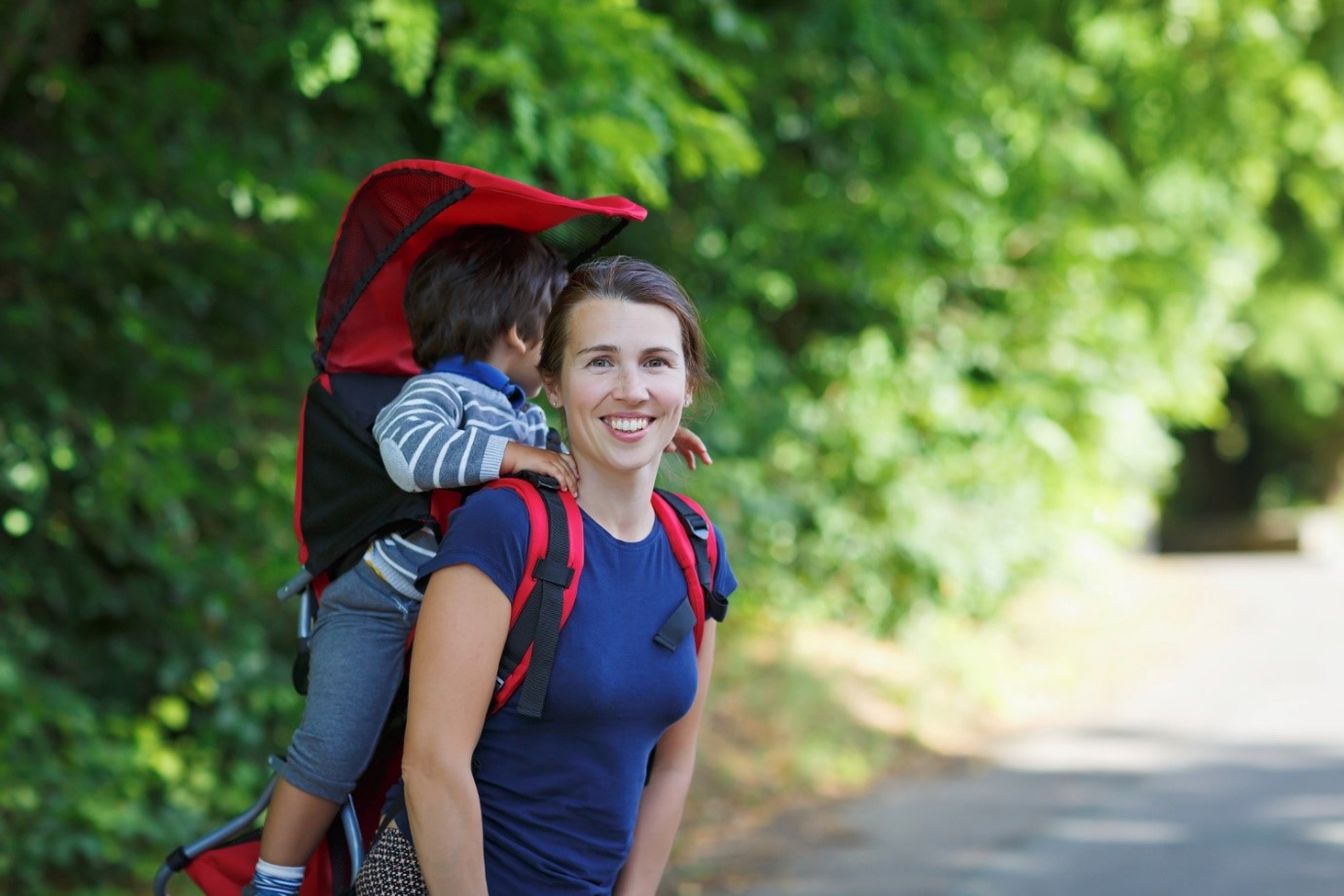In the pregnancy, your child was carried for nine months. Your kid was probably quite content in their snug surroundings, even though carrying them occasionally could have been difficult for the one doing it.
Some parents decide to carry their baby from the fourth trimester (the newborn days) all the way up to the toddler years because they find that newborns have a tendency to have strong opinions and will often express them loudly (and sometimes beyond).
Although wearing a baby may appear fashionable, it has been done for thousands of years. There are several baby carriers available nowadays, which might be confusing if you’re not aware with all the many types and terminologies.
How did we choose the best baby carriers?
We’ve discovered a few things about the performance of the best baby carriers and which features are most important for parents on the move after months and months of intensive testing. Babywearing is becoming more and more popular, which has caused a rise in the number of competing goods, allowing modern parents a wide range of options and designs to choose from. In this blog to help you reduce your selections to a few carriers that will work best for your kid and your budget.
The following carriers are rated favourably by the providers we consulted and in reviews for being:
The following carriers are rated favourably by the providers we consulted and in reviews for being:
- Simple to use
- Reliable;
- Flexible enough to meet various needs and carrying positions.
Best Baby Carriers Designed for Comfort
Best Baby Carrier with No Frills
Given that they have fewer buckles and adjustments than some other carriers, soft wraps and ring slings may be an easier option.
Despite the fact that they look simple, it’s crucial to read and abide by the directions carefully since if used improperly, especially for kids under four months old, they might create risks.
Boba Wrap
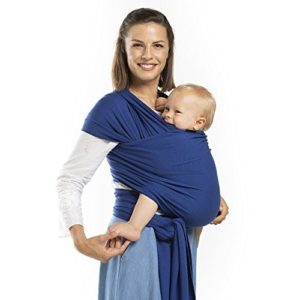
- Weight range: 7–35 lbs
- Material: 95% French terry cotton and 5% spandex
- Baby position: Front, facing inward
- Price: NA
Pros: The elastic, plush wrap doesn’t really feel like a carrier.
Cons: With heavier kids, it’s not as comfortable.
Dads’ Best Baby Carrier
Any baby carrier that fits and is comfortable for a man to wear is acceptable. A couple carriers available now could accommodate a bigger construction better.
Action Baby Carrier S.01 Mission Critical

- Weight range: 8–35 lbs
- Material: Nylon
- Baby position: front, inward- or outward-facing
- Price: NA
Pros: It has a tough design and is constructed of strong materials.
Cons: The sensitive skin of a newborn may become scratched or torn by strong cloth.
The Best Baby Carriers for a Range of Sizes
You may get carriers in a variety of sizes, especially wraps and slings. Conversely, soft-structured carriers often come in a single size with a belt that may be adjusted. The good news is that choices for bigger bodies are available.
Omni Ergobaby 360
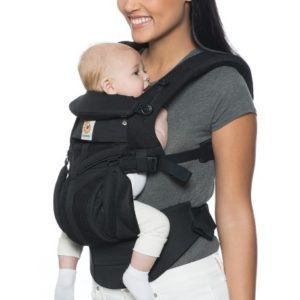
- Weight range: 7–45 lbs.
- Material: Cotton
- Baby position: front, inward, or outward
- Price: NA
Pros: Using straps and buckles, you may adjust the fit. For warmer areas, there are whimsical textiles (like Harry Potter) and cool mesh materials.
Cons: The material could be rigid. The setup and usage instructions included with the package should be more explicit.
Toddlers’ Best Baby Carriers
Even though toddlers are always moving, they occasionally like being carried. If a carrier has comfortable cushioning and appropriate ergonomic support, it may assist protect your back.
Tula Toddler Carrier

- Weight range: 25–60 lbs
- Material: 52% linen, 48% cotton
- Baby position: Front, facing inward; back
- Price: NA
Pros: The materials are of high quality. It can carry up to 60 pounds and has a choice of patterns.
Cons: Young babies weighing less than 25 pounds cannot utilise it.
The Best Baby Carriers for a Range of Sizes
You may get carriers in a variety of sizes, especially wraps and slings. Conversely, soft-structured carriers often come in a single size with a belt that may be adjusted. The good news is that choices for bigger bodies are available.
Ergobaby Omni 360
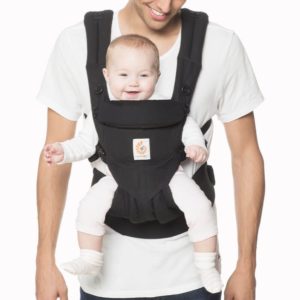
- Weight range: 25–60 lbs
- Material: 52% linen, 48% cotton
- Baby position: Front, facing inward; back
- Price: NA
Pros: Premium materials are employed. It carries up to 60 pounds and is available in a variety of prints.
Cons: It cannot be used on infants weighing less than 25 pounds.
Best Baby Carrier for Facing Forward
The most secure position for younger infants is on your front, facing in. As your child grows, they might not be as satisfied looking inward near your body. Your infant will receive a little more stimulus and entertainment if you turn their face outward.
BabyBjörn Mini Carrier
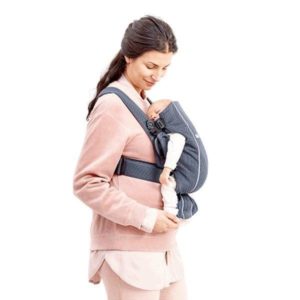
- Weight range: 25–60 lbs
- Material: 52% linen, 48% cotton
- Baby position: Front, facing inward; back
- Price: NA
Pros: Quality materials are used.
Cons: With infants weighing less than 25 pounds, it cannot be used.
Best Summer Baby Carrier
Yes, it may be pleasant to cuddle up next to your baby in a carrier. Additionally, particularly in the summer, it may get extremely heated. The good news is that businesses have responded to this by developing carriers made from breathable fabrics.
LILLEbaby Complete Airflow

- Weight range: 25–60 lbs
- Material: 52% linen, 48% cotton
- Baby position: Front, facing inward; back
- Price: NA
Pros: Quality materials are used. It can carry up to 60 pounds and has a choice of patterns.
Cons: Newborns weighing less than 25 pounds cannot use it.
The Most Affordable Carrier for a Variety of Jobs
Lacking a significant budget to spend on a carrier? Or perhaps you want to get a couple different kinds without going broke. It’s alright. Some excellent solutions are far under $50.
Infantino Flip 4-in-1 Convertible Carrier

- Weight range: 25–60 lbs
- Material: 52% linen, 48% cotton
- Baby position: Front, facing inward; back
- Price: NA
Pros: Quality materials are used. It carries up to 60 pounds and is available in a variety of fabrics.
Cons: With infants weighing less than 25 pounds, it cannot be used.
How to Choose the Right Carrier
After evaluating a number of carriers for this evaluation and in years past, we have discovered that there are numerous high-quality options available. Many of them offer as many interesting and cutting-edge fabric and design options as there are newborns to fill them. Many parents are now more confused than ever about which carrier to pick and why as a result of these possibilities. Even choosing the ideal carrier style for you might be challenging, let alone choosing the finest choice within that style.
Our research leads us to the conclusion that comfort and convenience of use are the two elements that matter most. Why? First of all, you won’t use a carrier if it is uncomfortable. An uncomfortable carrier is more likely to wind up resting in a closet than being used when you and your kid are out and about on adventure. Second, parents who are sleep deprived don’t need any more sophisticated infant equipment that requires time and effort to use. A baby carrier that is both easy to use and cosy is a winning combination.
Benefits of Baby Carriers
If you begin when the child is a newborn, this is such a lovely way to introduce your child to the outside world. You have the chance to bring your child out of the womb and into the world at this time. Some people who carry babies do it in a very calm manner.
You are, have been, and will continue to be their whole universe. Since you are their only source of solace and sustenance and are aware that you are everything to them, wearing them will make them feel as though they are inside the womb.
When they are with their mothers, babies are happiest. The wailing of newborns is decreased by almost 43% with just three hours of babywearing each day, according to a research, and who wouldn’t desire a means to have a less fussy baby?
Helps baby sleep comfortably
The fact that you are moving, rocking, and walking helps to relax and lull them to sleep. They’re accustomed to it. Simply said, because they are on you, these carriers provide them comfort and make it much simpler for them to settle down.
They can relax, settle down, and fall asleep much more easily since they are comfortable, can smell you, hear your voice, feel your warmth, recognise the rocking, and sleep much better and sounder as a result.
Babies cannot sleep in the same way in a swing or a bouncing seat.
Benefits a baby’s health
Numerous studies have shown that it aids in maintaining a baby’s body temperature and heart rate in a stable range. Because they are near to your body, it always helps balance those functions in their body whether you are at home or out and about.
In a way, you already had them, but now that you’re wearing them a little higher, they are shielded from the outside world.
Baby and you are developing this brand-new sort of bond. Instead of placing them in a swing or bouncy seat, they are on you.
Breastfeeding more comfortably, producing more milk more easily for the mother, and having newborns who sleep more soundly and scream less all contribute to a baby’s healthy physical development.
This is a safe and secure holding posture for the baby: upright. This is comparable to how they were carried in the womb, therefore their digestive and respiratory health will both be much improved. Therefore, their general growth and development will be much better.
Reduce the chance of SIDS
According to studies, carrying a baby lowers the chance of SIDS. And that is heavily influenced by the previously mentioned fact.
While you are wearing them, their body temperature and heart rate are controlled. You may observe them, examine them, and ensure that they are positioned such that their airflow and other factors are ideal. Therefore, you are essentially eliminating most of the risk factors for SIDS.
Reduces the flat-head condition
Additionally, some research indicates that using a baby carrier reduces the chance of flat head syndrome. which many mothers are concerned about. Flathead syndrome is less common among mothers who wear their infants instead of leaving them lying flat all the time.
A flat or malformed skull, hip dysplasia, frog legs, and other anomalies that can occur when newborns are left in their cribs for extended periods of time, on a regular basis, on their backs or bellies, are all prevented by baby wearing. But all of those drawbacks may be eliminated with baby-wearing.
Prevents kids from wandering about in busy areas
One of the most obvious advantages of carrying or wearing a baby is that it becomes more difficult to hold them as they become older. Babies become unpredictable as soon as they can walk, run, or crawl. Wherever they feel like going, they will crawl, run, or walk.
The baby carrier will prevent your child from getting into mischief when you go to the grocery shop or any other retailer. They are prevented from spreading germs by not touching anything. As carts are not always clean, you are not required to place them in the carts.
Additonally, it will restrict them in unsafe and busy locations like stations, terminals, etc.
Your toddlers will be fully content while being worn in it. They don’t feel the urge to rush around or get down while they are on your back peering over your shoulder and watching everything you are doing.
They are just satisfied and happy where they are, and you don’t have to worry about picking up diseases from them or chase after them every time they veer off course.
Conclusion
It might be challenging to know where to begin or how to reduce the number of available carriers when there are so many. In the end, a straightforward, adaptable, and supportive carrier is a safe bet. You should be able to select one or two top selections from the high-ranking items by keeping the three aforementioned questions in mind.

